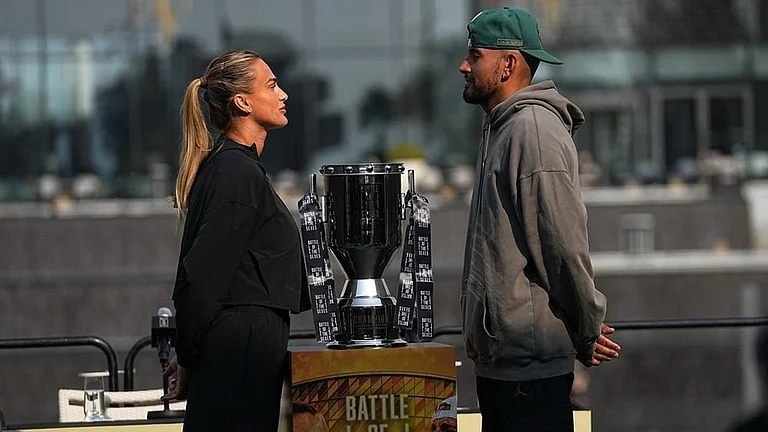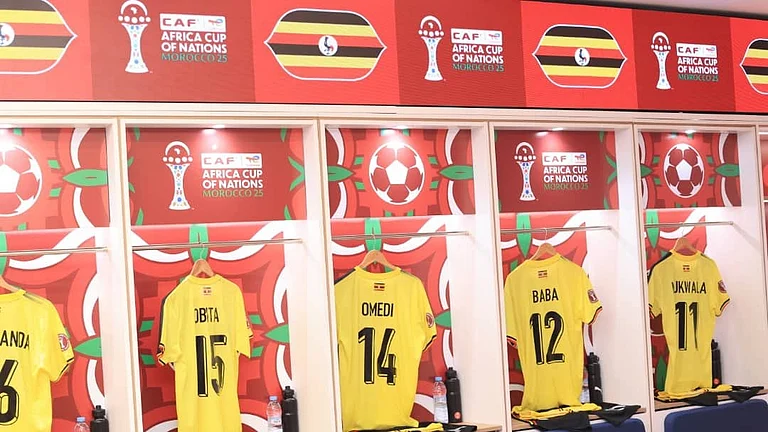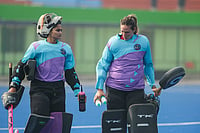On a sultry summer evening in April this year, the road leading to Chennai’s Island Grounds was lined with party flags—and fleets of speeding mini buses were ferrying in supporters for what was J Jayalalitha’s opening election rally. Outside the gates, many munched on sundal as they browsed through the merchandise on sale. The paper-wrapped chickpea snack was a good cure for the bored and the peckish browsing by items like key chains, posters and purses. Plus, there were pocket-sized photos of the party supremo, the ones that grace the breast-pocket of every white-shirted AIADMK member. Then, you got swept in, past the towering cutouts of Amma, into the crowds all pumped up by one rousing number after another until with a dramatic drum-roll the leader appeared. The atmosphere was electric.
It was pretty much the same drill in Chennai or in the state’s second-most populous city of Coimbatore. The urban poor or the rural labourer reacted in the same way, nursing the same hope: ‘Amma would take care of us’. Now, it was despair that welled up for thousands as they grieved for her, some inconsolably.
In Tamil Nadu’s pantheon of larger-than-life charismatic leaders who have ruled the state for the last half a century, all of them first wove their magic through films. But does that celluloid bond explain it all—the connect, the adulation that at times spilled over into the absurd? Like, for instance, why couldn’t someone like Sivaji Ganesan, a thespian par excellence, crack the political code. Or, perhaps, how the spectacle of political hero-worship in a state that wears its progressive credentials with such pride, and deservedly so, never fails to amaze everyone else. Or was there a deeper element at work, a Tamil persona that lent itself to building up the images, of M.G. Ramachandran’s unshakeable aura as the elai thozhan, ‘friend of the poor’, or Jayalalitha’s transformation into Amma through a long, and admittedly tougher political career. There’s no easy answer.
Of course, to some extent, Tamil Nadu isn’t alone and you can find possible comparisons elsewhere. There’s the old metaphor of Indira as Durga. There’s a temple for Sonia Gandhi in Telangana. Diagonally opposite that new state, the Saurashtra belt of Gujarat saw early last year a Narendra Modi mandir; the icon at Rajkot was removed after the prime minister himself expressed disapproval. The ‘Har Har Modi’ slogan too approached this tendency to divinisation, yet has seldom held Gujarat’s son as anything more than India’s supreme ruler. Down the Deccan again, riotous scenes visited Bangalore a decade ago on the demise of Kannada cinema’s biggest star Rajkumar (who had never stepped into politics, though).

With Dravidian ideologue Periyar; and with his rebellious legatee, C.N. Annadurai
Such hero worship in the Dravidian land has varied reasons, according to observers. Classical musician T.M. Krishna says Tamil Nadu maintains a “very fine line” between the personal and the public and the passions that go into both. “If a death happens, for instance, there’s a great amount of expression, very overt expression that follows. It’s a very cultural thing, being very expressive of what you are. And many people cannot understand that even,” he notes. “This heightened expression can very easily also border on hysteria, on irrationality and that’s a very fine line we always seem to border upon.” But then, the Carnatic vocalist also asks: Don’t the personal and the public have fluid borders everywhere else in India? “Here it is far more heightened than anywhere else.” It’s a point of view many would agree with.
Veteran analyst B.R.P. Bhaskar points out that adoring the leader is not entirely new to the Indian system. “But there (Tamil Nadu), they go much farther than others would do elsewhere,” he says. “In a sense, Indira Gandhi had that kind of following,” he says, recalling an anecdote from a tour of Maharashtra’s drought-affected areas with politician George Fernandes in the 1970s. One evening, Fernandes got a letter from his wife Leila Kabir, who was on holiday in Orissa at Gopalpur-on-sea, writing about her conversation with fisherwomen from a poverty-stricken coastal village there. Don’t you think Indira Gandhi should be doing something about your condition, was her question to them. And the answer, Bhaskar says, was: “Who else is interested in helping us? But these other people aren’t allowing her to!”
“When we try to look at the Jayalalitha phenomenon, we must see this. There are leaders who are capable of establishing direct links with poor people at the bottom and in our time probably, it has been exemplified most by Jayalalitha,” says Bhaskar. And, Jayalalitha, like it happened with late prime minister Indira, once lost an election.

Mentor MGR inducts her into the party in ’82; after the assault in the assembly, ’89
Many see Tamil Nadu maintains a link between hero worship and cinema, but Chennai-based political commentator N Sathiyamoorthy disagrees. Late Congress leader K. Kamaraj, for instance, was hero-worshipped in his time, he points out. “People at the grassroots level rated what people today dismiss as ‘subsidy’ politics. But they saw it happening for them before their eyes,” he says. As chief minister, MGR didn’t increase power tarrifs, milk or ration-rice prices for the ten full years of his tenure (from 1977), he points out.
Of course, there’s no denying that MGR even as an actor was part of a growing, cultural, political and social movement and the roles written for him furthered its reach. “In that sense he was political from the word go, though his political ideas took expression from cinema,” says political observer Mahesh Rangarajan. But he feels it’s just lazy to explain away some of the hero-worshipping phenomena as stemming from a Tamil psyche as such, just as it is to label a part of India as the ‘cow belt’. “If it was the Tamil psyche, why was it not there before MGR? And, if Jayalalitha marks the end of it, which many people believe she does, then why has it ended so quickly?”
Rangarajan reckons one of MGR’s greatest contributions to Tamil Nadu was to universalise the midday meal scheme, at its time among the largest schemes in the world. Jayalalitha, much more significantly, put women at the centre, he says, not just through the Amma canteens, but various other schemes—credit programmes, women’s police stations, scholarships for education and higher enrolment of women. “This is something she made central and that is one reason she was so indestructible in politics,” says Rangarajan. Of course, there’s no denying the power of her charisma and that she, as a single woman, re-invented herself politically in the face of adversity and rose above it.
The magic of cinema, in many ways, cannot fully be ignored in the narrative. “The power of cinema is so strong and why in Tamil Nadu, you may ask. You see, the state has the highest exposure rate of cinema in the country,” says film historian S Theodore Baskaran. It means an average Tamil saw a lot more films than others. “And this continues. Any mass campaign, cinema has to be in it,” he says. True, MGR was the first screen star to become a mass leader and successful politician—he probably inspired others like N.T. Rama Rao in neighbouring Andhra Pradesh. But it was C.N. Annadurai, the founder of the Dravida Munnetra Kazhagam (DMK), who was the icon of adulation from his long years of activism. He, along with reformer-rationalist E.V. Ramasamy Periyar, took the Dravidian movement to the masses through fiery speeches, theatre and films before finally breaking the Congress’ political hold over Tamil Nadu. Over the years, there has also been a separate thread to the course of politics in the southern state where the language of protest has lent itself to an extreme response. Like, for instance, the suicides linked with DMK leader M. Karunanidhi’s arrest in 1986 or, for that matter, Vaiko’s ouster from that party eight years later.

Jaya arrested from her Poes Garden residence in Chennai on Dec 7, 1996
Perhaps Tamil Nadu’s much-vaunted delivery system, with its faceless bureaucracy, is the edifice on which some of its tall leaders built up their adulatory status outside of cinema, according to some. “In fact,” says Krishna, “that’s why this works here better than anywhere else.” There exist inherent paradoxes, like how the Madras state was a crucible of powerful arguments advocating social justice and assertion of identity. “Tamil Nadu, in spite of all the caste conflicts which have happened, is the state that really brought these conversations onto the table,” he says.
But like many others, Krishna also agrees that much of that has veered off course over the years. Some of it, like the anti-religion discourse, possibly has come full circle, he reckons. “It worked for 20-30 years but then it triggered the opposite and we have become more overtly ritualistic than before. If you look at the ministers falling at Jayalalitha’s feet, it’s a ritual. We should not see it only as subservient to a leader or hero worship but it’s part of a ritual which is ancient. We have to view this in the context of what a ritual does. The religious context is many times a source, the same action is then transferred on to various contexts,” says Krishna. By that measure, he also reckons, the complex interaction between culture and democracy isn’t very carefully understood yet. “There is this problem in the intellectual world of conversation, especially in English, where we see democracy in a very non-cultural idea,” he says.
How will Tamil Nadu’s colourful and spectacular politics of charisma play out in the post-Jayalalitha milieu? Has it turned a bend or will it live on? It’s the question everybody’s asking.


























